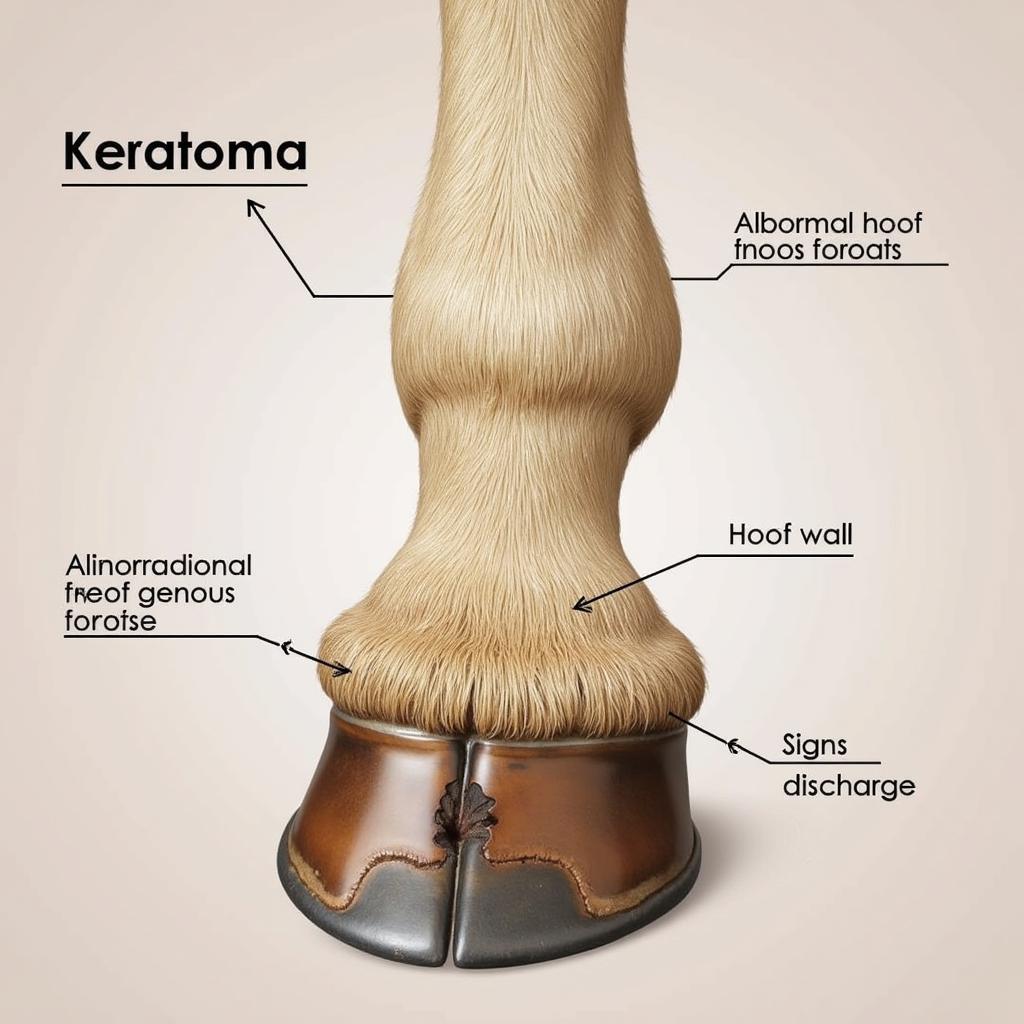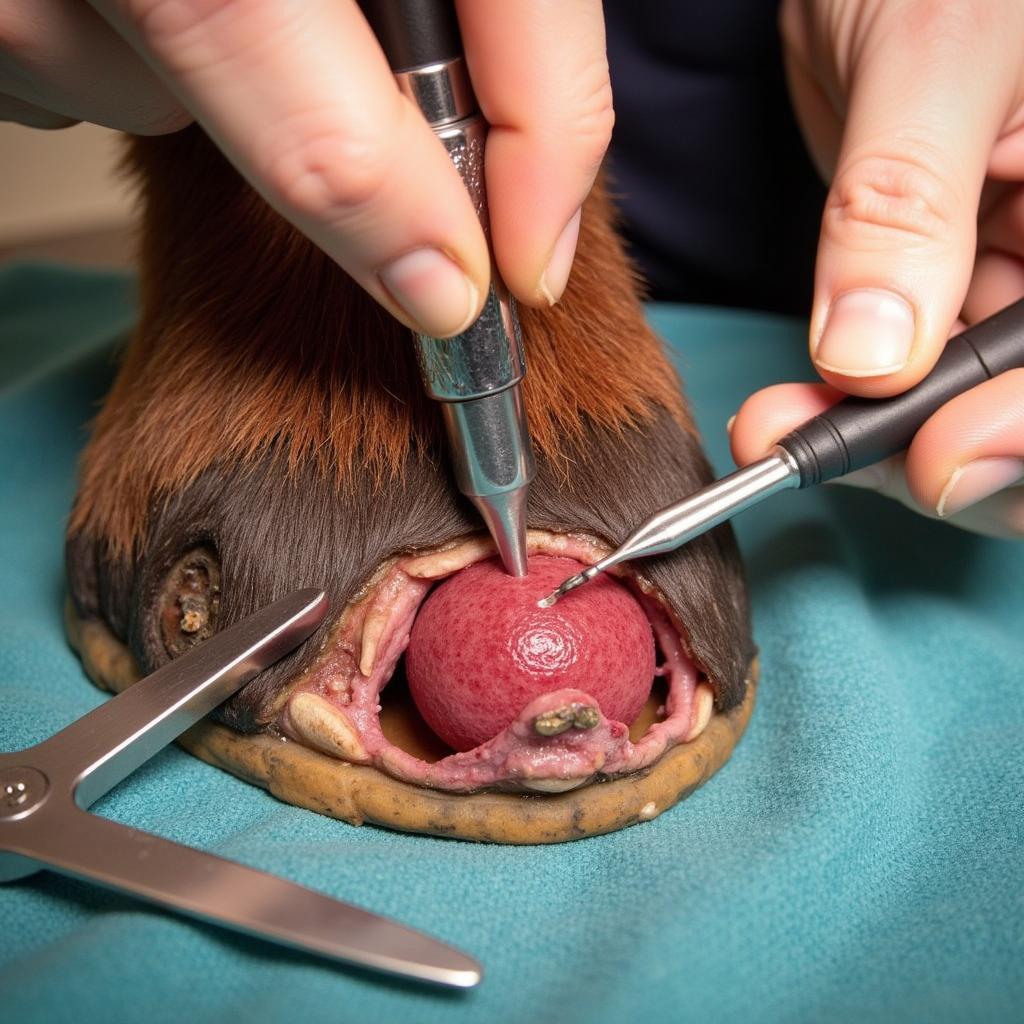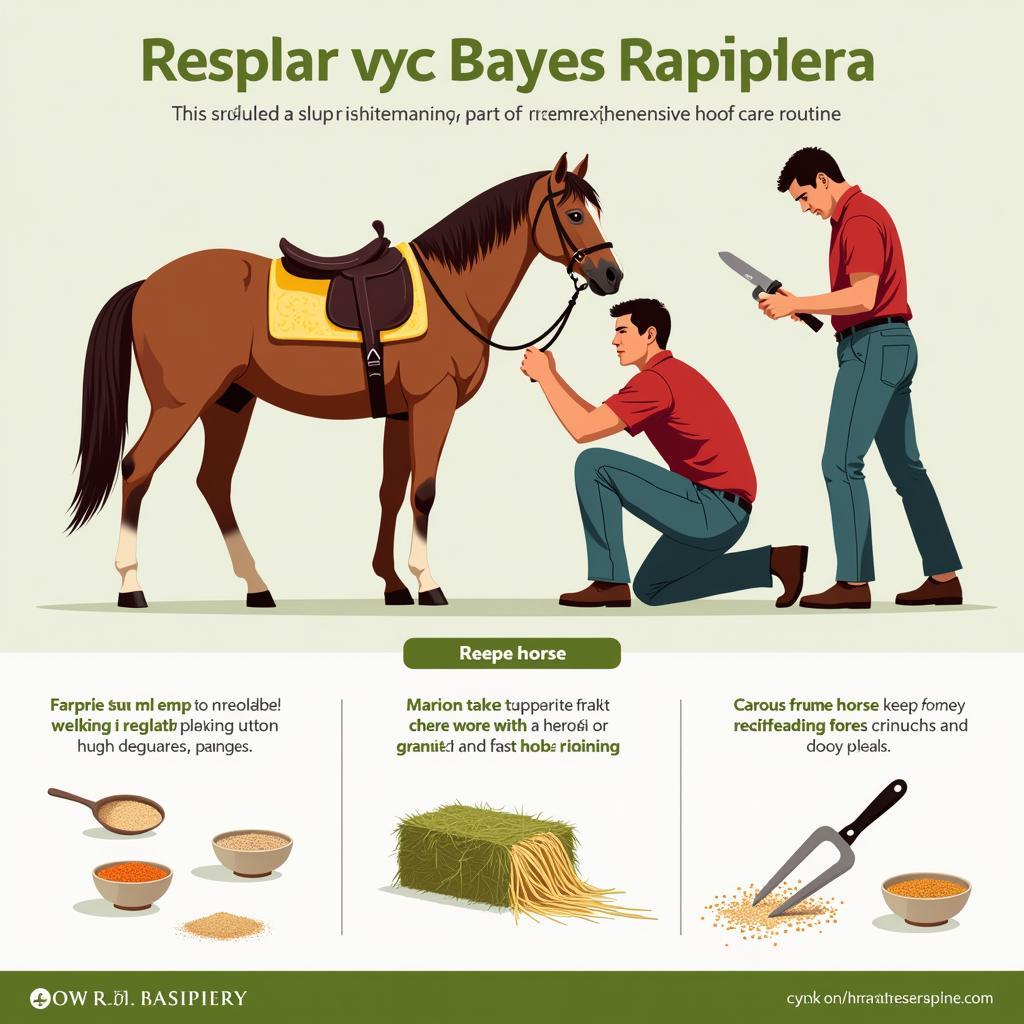Horse Keratoma, also known as a corn, is a common hoof ailment that can cause significant discomfort and lameness in horses. It’s a tumor-like mass of keratinized tissue that develops within the hoof wall, typically in the non-pigmented areas. Understanding the causes, symptoms, and treatment options for horse keratoma is essential for any horse owner dedicated to their animal’s well-being.
What Causes Horse Keratoma?
Several factors can contribute to the development of keratomas in horses. These include poor hoof conformation, improper trimming or shoeing, bruising or injury to the hoof, and infections. In some cases, the exact cause may be unknown. Regardless of the origin, early diagnosis and treatment are crucial to prevent further complications.
Common Symptoms of Keratoma in Horses
Recognizing the signs of a keratoma is important for timely intervention. Lameness, especially when the affected hoof bears weight, is often the first noticeable symptom. Other indications include a foul odor emanating from the hoof, abnormal hoof growth, and the presence of discharge. In some instances, a visible crack or deformity in the hoof wall might be apparent.
What are the common symptoms of keratoma? Lameness, foul odor from the hoof, abnormal hoof growth, and discharge.
 Horse Keratoma Symptoms: Lameness, Abnormal Growth, and Discharge
Horse Keratoma Symptoms: Lameness, Abnormal Growth, and Discharge
Diagnosis and Treatment Options for Keratoma
Diagnosing a keratoma typically involves a thorough examination of the hoof by a veterinarian or farrier. Radiographs (X-rays) are often necessary to determine the size, location, and extent of the keratoma within the hoof. Treatment options vary depending on the severity and location of the keratoma. In less severe cases, corrective trimming and shoeing might be sufficient. However, surgical removal is often required to completely eliminate the keratoma and prevent recurrence.
Surgical Removal of Horse Keratoma: What to Expect
Surgical removal of a keratoma involves creating a window in the hoof wall to access and remove the keratinized mass. This procedure is usually performed under local anesthesia. After the keratoma is removed, the veterinarian or farrier will apply a protective dressing or shoe to promote healing and prevent infection.
Post-Operative Care for Horses with Keratoma
Following surgical removal, proper post-operative care is essential for a successful recovery. This includes regular bandage changes, keeping the hoof clean and dry, and restricting the horse’s activity. The veterinarian will provide specific instructions for aftercare based on the individual case. Regular follow-up examinations are also crucial to monitor the healing process and identify any potential complications.
 Horse Keratoma Surgery: Hoof Wall Resection and Keratoma Removal
Horse Keratoma Surgery: Hoof Wall Resection and Keratoma Removal
Preventing Horse Keratoma: Best Practices for Hoof Health
While not all cases of keratoma are preventable, implementing good hoof care practices can significantly reduce the risk. Regular hoof trimming by a qualified farrier is crucial for maintaining proper hoof balance and preventing imbalances that can contribute to keratoma development. Providing a balanced diet, ensuring a clean and dry environment for the horse, and addressing any hoof injuries promptly are also important preventative measures.
“Regular hoof trimming is the cornerstone of preventing many hoof problems, including keratomas,” advises Dr. Emily Carter, DVM, specializing in equine podiatry. “Maintaining proper hoof balance and addressing any abnormalities early on can significantly reduce the risk of this painful condition.”
 Horse Hoof Care: Regular Trimming and Balanced Diet
Horse Hoof Care: Regular Trimming and Balanced Diet
Conclusion: Prioritizing Hoof Health for Your Horse’s Well-being
Horse keratoma is a treatable condition, but early diagnosis and intervention are essential for a positive outcome. By understanding the causes, symptoms, and treatment options, horse owners can take proactive steps to protect their horses from this painful hoof ailment. Regular farrier visits, proper hoof care, and a balanced diet are key components of maintaining optimal hoof health and preventing horse keratoma.
FAQ
- What is the most common cause of horse keratoma? Improper trimming and shoeing are often leading causes.
- Can keratoma be treated without surgery? In some cases, less severe keratomas can be managed with corrective trimming and shoeing.
- How long does it take for a horse to recover from keratoma surgery? Recovery time varies, but it typically takes several weeks to months.
- What are the signs of infection after keratoma surgery? Increased pain, swelling, heat, and discharge from the surgical site can indicate infection.
- How can I prevent keratoma in my horse? Regular farrier visits, a balanced diet, and a clean, dry environment can help prevent keratoma.
- Is horse keratoma contagious? No, horse keratoma is not contagious.
- What is the prognosis for a horse with keratoma? With proper treatment, the prognosis for horses with keratoma is generally good.
“Early intervention is key when it comes to treating hoof problems,” adds Dr. Carter. “The sooner a keratoma is diagnosed and treated, the better the chances of a full recovery and a return to normal activity for the horse.”
If you have concerns about your horse’s hoof health, consult with a qualified veterinarian or farrier for a thorough evaluation and appropriate treatment.
For further information on horse hoof care, you might find our articles on “Common Hoof Problems in Horses” and “Choosing the Right Farrier” helpful. These resources can be found on our website.
When you need assistance, please contact us at Phone Number: 0772127271, Email: [email protected] or visit our address: QGM2+WX2, Vị Trung, Vị Thuỷ, Hậu Giang, Vietnam. We have a 24/7 customer care team.